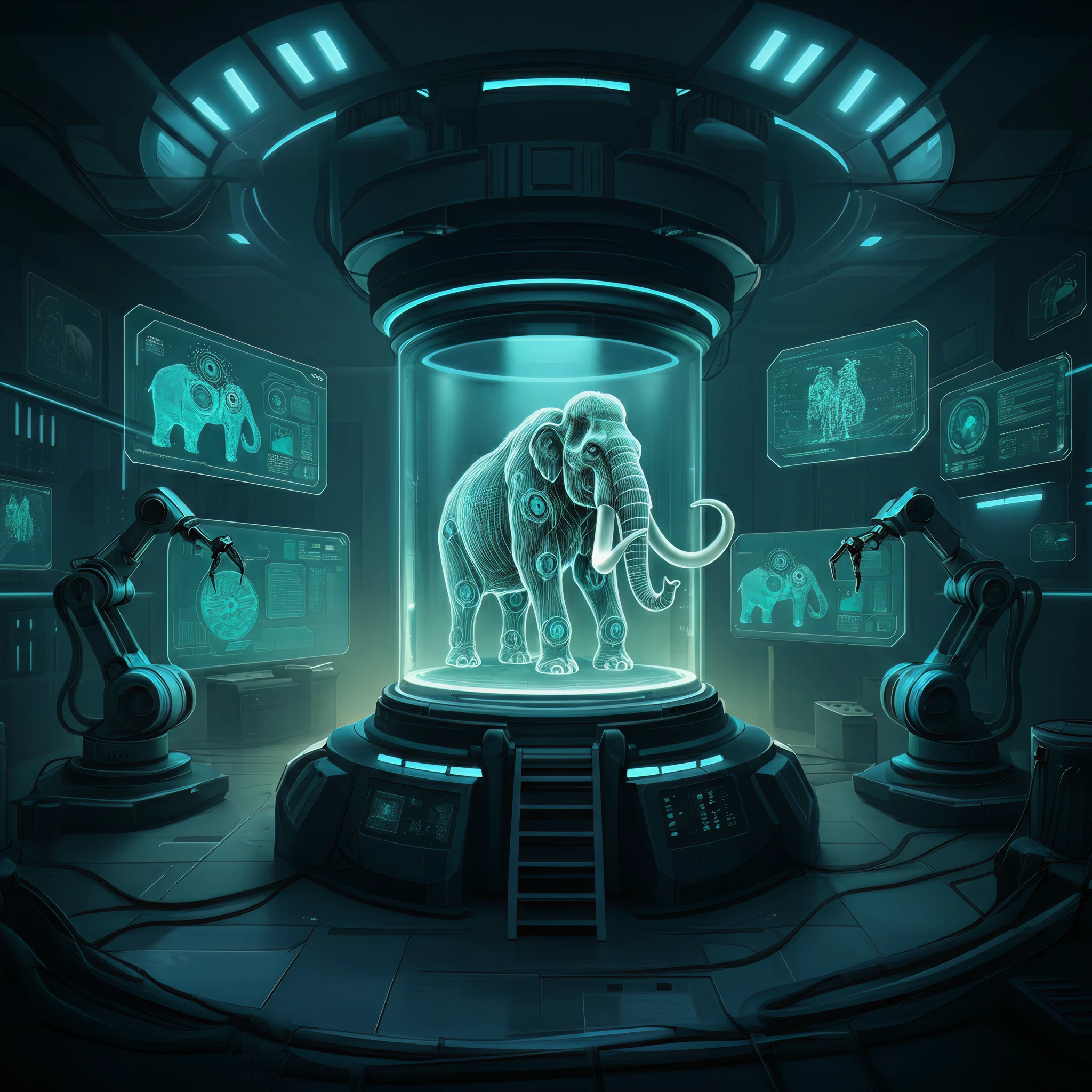Bringing the woolly mammoth back from extinction has long been a subject of fascination for scientists and the public alike. These massive, shaggy creatures once roamed the tundras, but they disappeared around 4,000 years ago due to climate change and human activity. Recent advances in genetic technology, however, have sparked hope for their de-extinction. But what if the process didn’t rely on reproductive cells, like sperm or eggs? Could scientists make a mammoth from scratch using cutting-edge technologies?
This article will break down the science, explain the methodologies, and explore the advantages, risks, and ethical considerations of creating a mammoth without using reproductive cells. Strap in for a deep-dive into the ambitious world of de-extinction science.
Why Try to Bring Back the Woolly Mammoth?
The idea of reviving the woolly mammoth extends beyond scientific curiosity. Advocates argue that reintroducing them could benefit ecosystems by reducing greenhouse gases, restoring grasslands, and slowing permafrost melting. Known as “Pleistocene rewilding,” this theory positions mammoths as vital players in combating climate change through ecological restoration.
Additionally, creating a mammoth would be an incredible demonstration of advanced biotechnologies that could address other ecological challenges, albeit with significant debate attached.
Key Technologies for Mammoth Creation Without Reproductive Cells
1. Somatic Cell Nuclear Transfer (SCNT)
SCNT involves transferring the nucleus of a somatic cell (a non-reproductive cell like a skin cell) into an enucleated egg cell (an egg stripped of its genetic material). Here’s how this process could work to create a mammoth:
- Scientists could collect DNA from well-preserved mammoth remains and extract nuclei from specific somatic cells.
- The nucleus would then be transferred into an elephant egg cell, which has had its genetic material removed.
- This hybrid egg cell is stimulated to develop into an embryo, carrying the blueprint for a mammoth.
SCNT bypasses the need for reproductive cells, but sourcing an elephant egg cell still presents challenges, and the embryo would likely need refinement to ensure its viability.
2. CRISPR and Comparative Genomics
CRISPR-Cas9, a precision gene-editing tool, is essential for resurrecting mammoths without reproductive cells. Using comparative genomics, scientists identify genes that distinguish woolly mammoths from their closest relatives, Asian elephants.
- Researchers could isolate critical mammoth traits like thick fur, fat stores, and cold resistance by studying mammoth DNA.
- CRISPR would then be used to “edit” the elephant DNA in a lab to include these mammoth-specific genetic traits, creating a “mammoth-elephant hybrid.”
This genome editing methodology reduces dependency on reproductive cell materials while allowing scientists to design organisms engineered for specific outcomes.
3. Artificial Womb Technology
One of the most futuristic aspects of this endeavor is the use of artificial wombs for gestation. Traditional cloning relies on surrogate mothers, but there are significant ethical and logistical challenges in using endangered Asian elephants to carry a mammoth.
- Artificial wombs mimic the natural environment of a uterus, allowing the embryo to develop outside a living body.
- This technology, still in experimental stages for humans and animals, would remove the need for a surrogate altogether.
If perfected, an artificial womb could support a mammoth embryo from start to finish, giving scientists complete control over the gestation process.
4. Computational Modeling for Viability
To ensure the viability of the mammoth embryo, computational tools and AI-powered modeling would play an instrumental role. Before creating a living organism, researchers would use simulations to predict how edited genetic material might behave during development. This reduces unforeseen risks and increases the chances of success, all without relying on reproductive or surrogate-related challenges.
Ethical Considerations and Risks
Bringing an extinct species back to life raises serious ethical questions and technical risks:
- Ecosystem Impact: Would mammoths adapt to modern ecosystems, or could they disrupt current ecological balances?
- Animal Welfare: Experimenting on modern elephants, even tangentially, raises concerns for their well-being. Artificial wombs could mitigate this but aren’t yet ready for practical use.
- Gene Escape: Could mammoth genes or hybrids lead to unintended consequences in wildlife populations or human-controlled environments?
- Success Uncertainty: Even the most advanced science comes with high failure rates and the possibility of producing non-viable or unhealthy organisms.
Despite these challenges, proponents of de-extinction argue that refining these technologies could have enormous ecological, scientific, and philosophical benefits.
The Future of De-Extinction Science
Whether these technologies are ultimately used to reintroduce the woolly mammoth or applied to other ecological restoration efforts, one thing is clear: they offer extraordinary potential for understanding and intervening in the world around us.
Re-creating a mammoth without reproductive cells marks a turning point in biotechnology. It demonstrates not only how we might address ecological challenges but also how humans are reshaping the boundaries of what biology can achieve.
Final Thoughts
The question “how could scientists make a mammoth without using any reproductive cells?” reflects the ingenuity of human innovation. By combining SCNT, CRISPR, artificial wombs, and computational modeling, it may soon be possible to achieve this feat. However, exploring this brave new frontier must be guided not only by scientific expertise but also by ethical responsibility.
Want to stay updated on breakthroughs in de-extinction and other incredible scientific advancements? Be sure to follow [Your Blog/Brand] for more insights and stories about reshaping our understanding of life on Earth!








